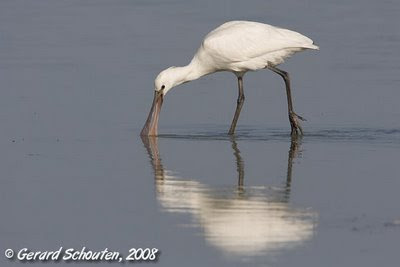
 An excursion to the “Oostvaardersplassen” was on my wish list for the winter holiday. A little bit of natural history first: The polder it exists in only became dry in 1968. Before 1968 it was part of the IJsselmeer (sometimes translated as Lake IJssel). The IJsselmeer on its turn was created in 1932 when an inland sea, the Zuiderzee, was closed by a 32 km dam, the “Afsluitdijk”. The original destination of this new land reclaimed from the sea was a large industrial area. However, because of the economic recension of that time plans were postponed, and nature took its chance. Within a few years a wetland of international importance came about.
An excursion to the “Oostvaardersplassen” was on my wish list for the winter holiday. A little bit of natural history first: The polder it exists in only became dry in 1968. Before 1968 it was part of the IJsselmeer (sometimes translated as Lake IJssel). The IJsselmeer on its turn was created in 1932 when an inland sea, the Zuiderzee, was closed by a 32 km dam, the “Afsluitdijk”. The original destination of this new land reclaimed from the sea was a large industrial area. However, because of the economic recension of that time plans were postponed, and nature took its chance. Within a few years a wetland of international importance came about.This day the “Oostvaardersplassen” offered classical Dutch winter scenery, all inland coastal lakes were frozen, and everywhere people were skating along the reed beds. As far as nature is concerned I want to share 2 photos.
Smews (Mergus albellus/Nonnetje), fishing in a dense flock on the IJsselmeer took wings after disturbance of a low-flying helicopter. Such large groups are rare today. A Buzzard (Buteo buteo/Buizerd) looking for prey, using the top an elder as a post. Note the intense green color of these bushes.





















































